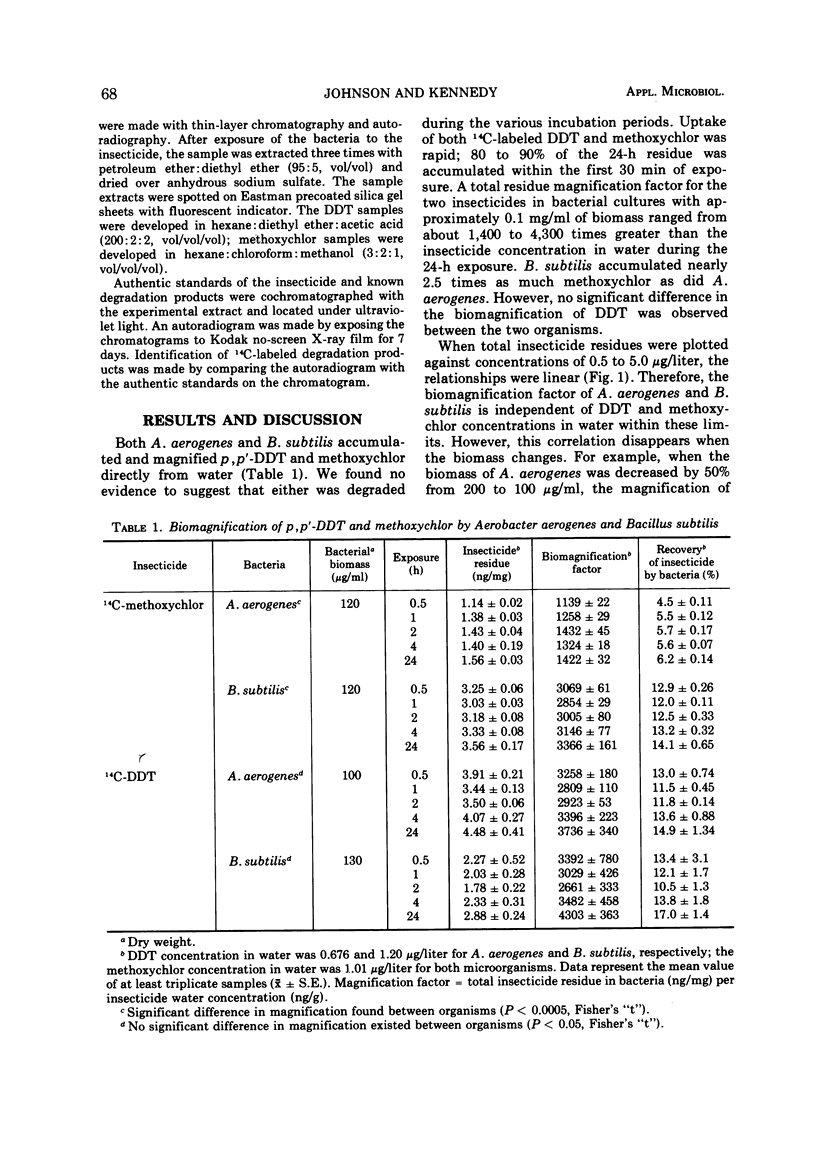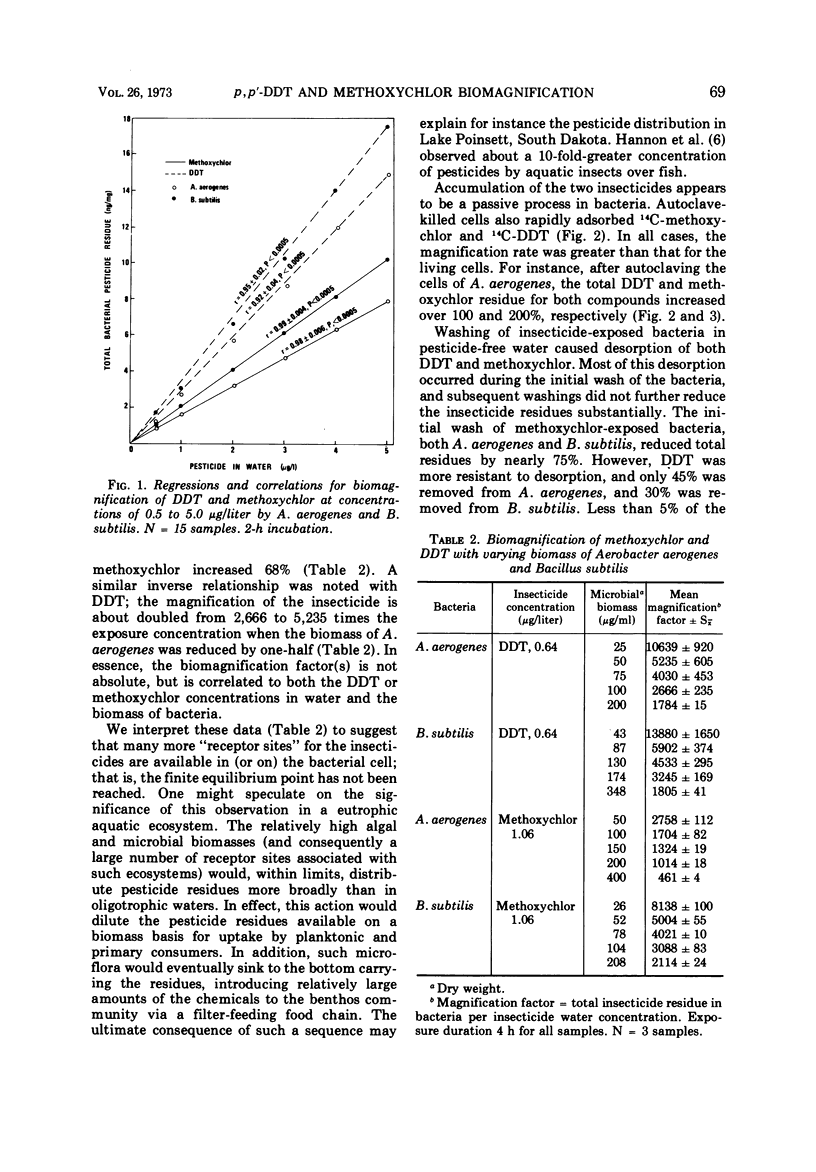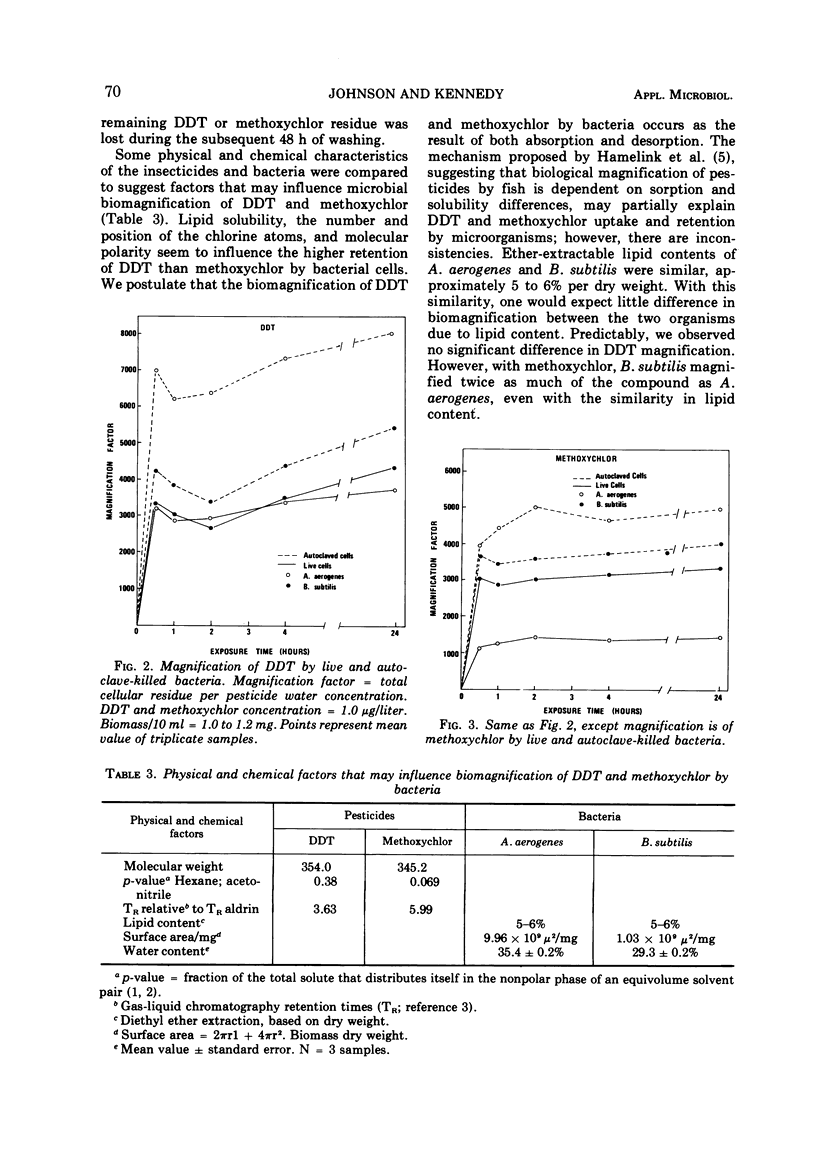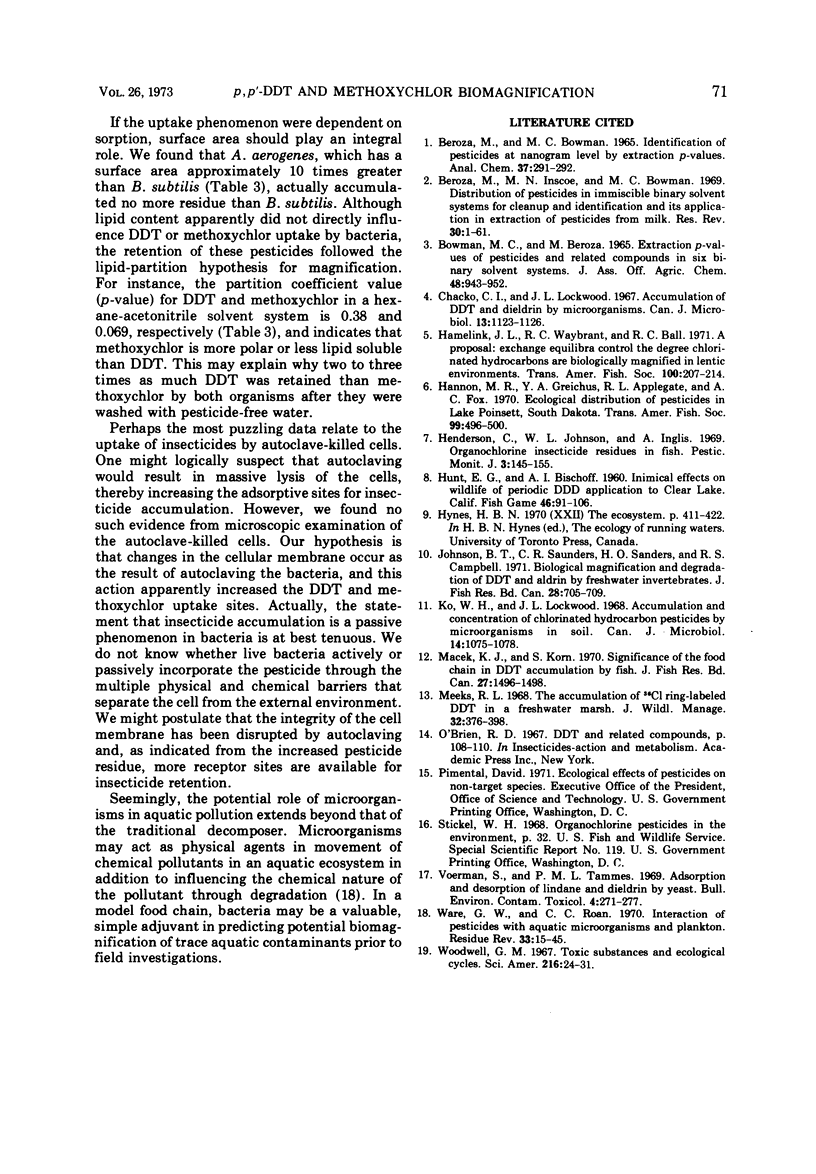Abstract
Aerobacter aerogenes and Bacillus subtilis accumulated p, p′-DDT and methoxychlor directly from water. Uptake of both 14C-labeled organochlorine insecticides was rapid; 80 to 90% of the 24-h residues were reached within 30 min. Total cellular residues varied linearly with concentrations of DDT and methoxychlor in water ranging from 0.5 to 5.0 μg/liter. The residue magnification factors from water were between 1,400- to 4,300-fold, but were independent of insecticide concentrations in water. When the insecticide-exposed microbial cells were washed with pesticide-free water, DDT residues were 45% in A. aerogenes and 30% in B. subtilis, whereas the methoxychlor level decreased nearly 75% in both organisms. Subsequent washing did not further reduce the insecticide residue. Autoclave-killed bacteria also rapidly adsorbed DDT and methoxychlor from water and, in some instances, residues were higher than in the living cells. Molecular polarity and lipid solubility appear to influence the retention of the organochlorine insecticides by bacterial cells.
Full text
PDF





Selected References
These references are in PubMed. This may not be the complete list of references from this article.
- BEROZA M., BOWMAN M. C. IDENTIFICATION OF PESTICIDES AT NANOGRAM LEVEL BY EXTRACTION P-VALUES. Anal Chem. 1965 Feb;37:291–292. doi: 10.1021/ac60221a033. [DOI] [PubMed] [Google Scholar]
- Beroza M., Inscoe M. N., Bowman M. C. Distribution of pesticides in immiscible binary solvent systems for cleanup and identification and its application in the extraction of pesticides from milk. Residue Rev. 1969;30:1–61. doi: 10.1007/978-1-4615-8458-2_1. [DOI] [PubMed] [Google Scholar]
- Chacko C. I., Lockwood J. L. Accumulation of DDT and dieldrin by microorganisms. Can J Microbiol. 1967 Aug;13(8):1123–1126. doi: 10.1139/m67-153. [DOI] [PubMed] [Google Scholar]
- Henderson C., Johnson W. L., Inglis A. Organochlorine insecticide residues in fish. (National Pesticide Monitoring Program). Pestic Monit J. 1969 Dec;3(3):145–171. [PubMed] [Google Scholar]
- Ko W. H., Lockwood J. L. Accumulation and concentration of chlorinated hydrocarbon pesticides by microorganisms in soil. Can J Microbiol. 1968 Oct;14(10):1075–1078. doi: 10.1139/m68-181. [DOI] [PubMed] [Google Scholar]
- Ware G. W., Roan C. C. Interaction of pesticides with aquatic microorganisms and plankton. Residue Rev. 1970;33:15–45. doi: 10.1007/978-1-4615-8467-4_2. [DOI] [PubMed] [Google Scholar]
- Woodwell G. M. Toxic substances and ecological cycles. Sci Am. 1967 Mar;216(3):24–31. doi: 10.1038/scientificamerican0367-24. [DOI] [PubMed] [Google Scholar]


